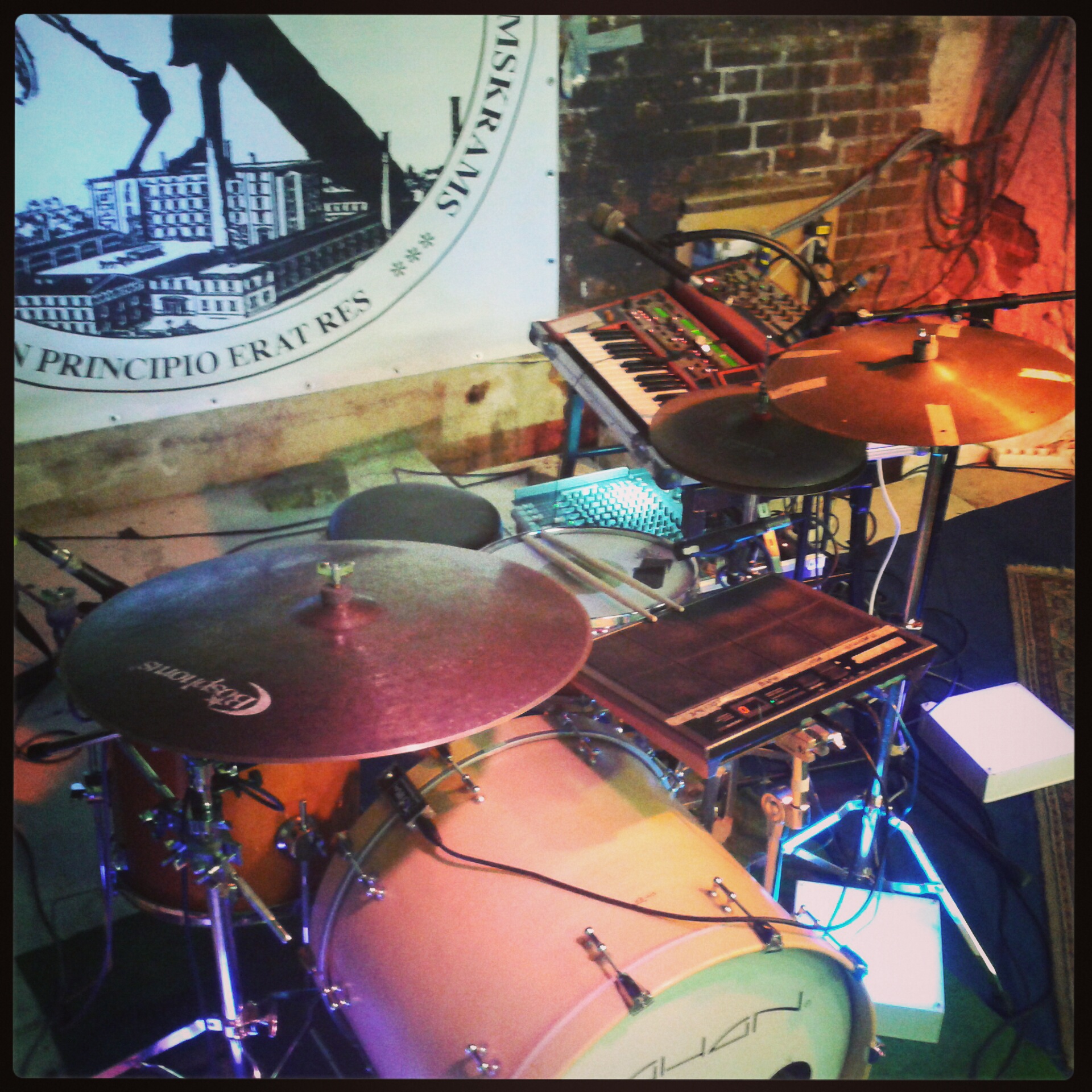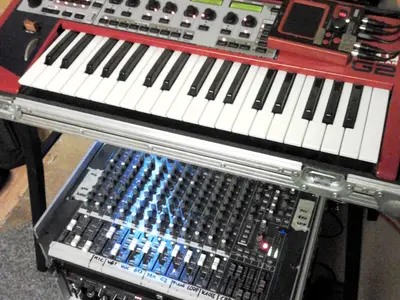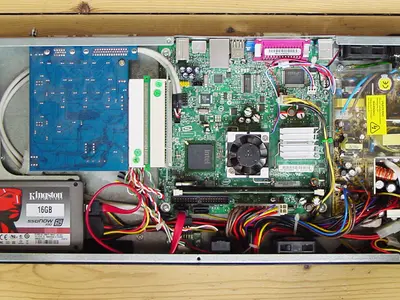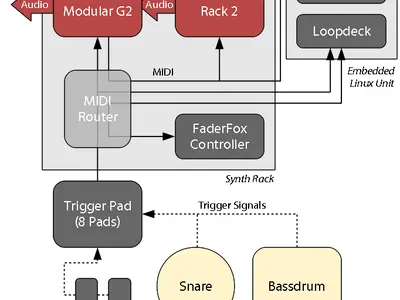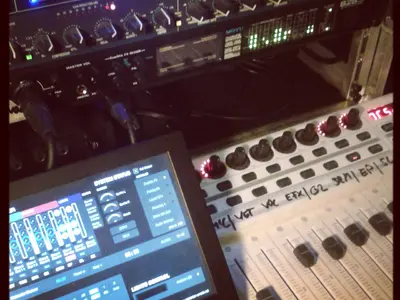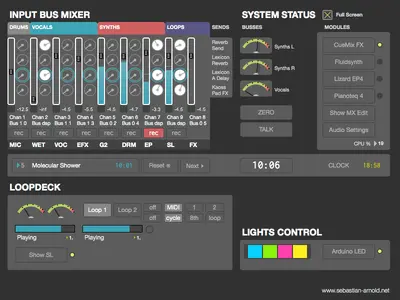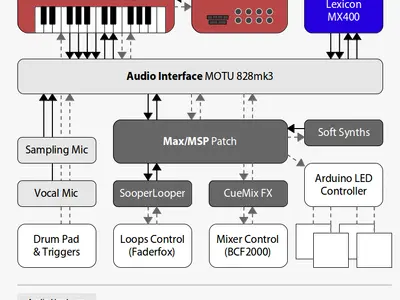My electronic live performance setup keeps evolving over the years. My main idea is to create unique, interactive electronic music as a solo performer using acoustic drums and synthesizers. I am trying to be as flexible as possible and control as many functions as possible using my drumsticks, thus creating an interactive electronic instrument around my drumset. In principle it follows the same building blocks since my first solo performance in 2007:
- The Drum Kit is an acoustic instrument, forming the heart of the live performance
- Synthesizers create the electronic sounds, such as bass and e-piano
- A Keyboard provides the interface to play notes on the synthesizers
- MIDI Controllers provide knobs and faders to interact with the system
- Drum Triggers and Trigger Pads produce signals from my drum hits, connecting me physically to the electronic system
- A Sequencer can play back predefined music patterns to teh synthesizers, and offers somewhat interactive elements, such as start, stop, reverse and randomization
- A Looper can record audio signals and play them back repeatedly over and over, in sync with the sequencer
- The Mixer takes all signals and produces a stereo sum to be sent out of the speakers. It also includes effects like delays and reverbaration
The analog mixer setup 2007–2013 —
Back in the days, the heart of system was the Nord Modular G2 Synthesizer. I produced almost all of the sounds and sequences in this machine. I accompanied it with a Nord Rack 2 synthesizer to extend the range of sounds to be played simulataneously, and also add more interaction elements, to be able to shape the sounds live while performing.
The looper was running on an embedded Debian Linux machine with realtime kernel, running Jesse Chappell’s excellent open source SooperLooper software. The system also served as a Soundfont player using FluidSynth for more realistic piano and Rhodes and Wurlitzer sounds. Everything was mixed down using an analog stereo mixer, where I used the solo bus to select the inputs to be recorded in the looper (i.e. a vocal or drum microphone or synthesizer).
For the trigger signals, I used an Alesis Control Pad with 8 pads plus trigger and footswitch inputs. The signals were routed using a self-built MIDI Router, who also distributed a common MIDI clock to all sequencers and the looper. Please see my popular video "Insert Coin" for this system in action:
The digital Max/MSP setup 2013–2020 —
With more and more touring, including occasional flights, my goal was to replace the analog mixer with something more compact. In addition, I needed total recall to be able to switch faster between songs and concentrate on my performance and the audience rather than the mixing desk. The problem with all products I could find on the market was either their size or their lack of auxes and busses, which I need to dynamically route audio signals between the different elements of the setup. I also didn't want to rely on a computer to process all my sound, because in case of a failure I still want to be able to manually play the drums, synthesizers and keep using my microphone to talk. So I came up with a DIY solution based on a MIDI fader controller and a Firewire audio interface that offered standalone latency-free mixing.
The system is based on a Mac Mini and MOTU 828mk3 audio interface, all built into a 5HE rack. This firewire device has many in- and output options and includes CueMix FX, which can do no-latency audio handling in standalone mode, even with EQs and compressors built in. CueMix FX is controlled via Open Sound Control (OSC) from a big Max patch that I wrote in the last months. The graphical window of this patch is my only interface to the computer and it is displayed on a 8″ Faytech Touch Screen.
I included some modules that connect other software: I use Fluidsynth, Lounge Lizard EP4 and Pianoteq 4 as permanently active soft synths. A patch management module is used for recall of aux send assignments and synth patches and includes clock and set timer :-) The loop module is a OSC bridge to SooperLooper and there also is this light controller, which interfaces an Arduino for some RGB LED light effects
I will continue to update this post with the newest updates soon.
